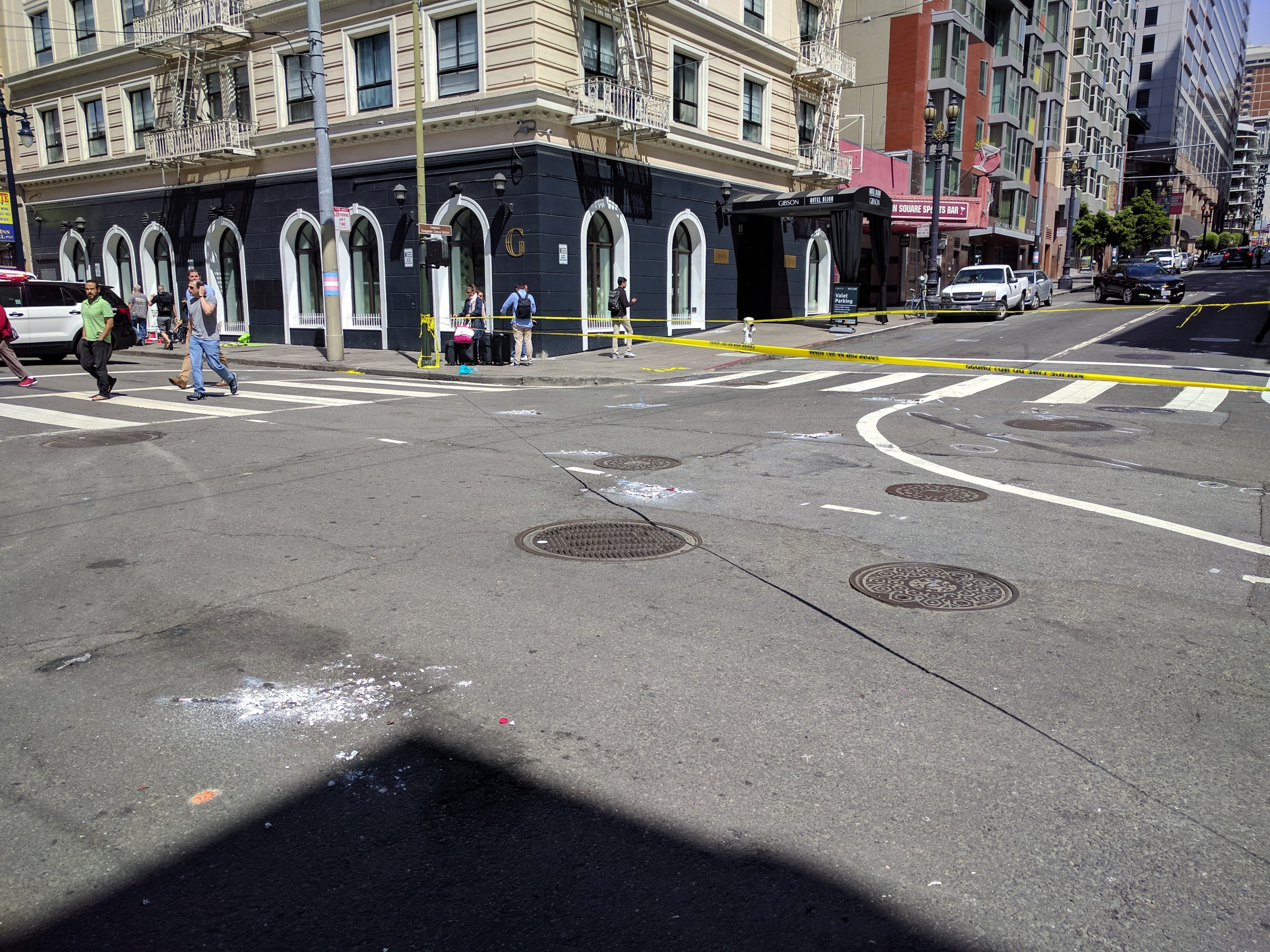A string of pedestrian injuries and deaths in San Francisco's Tenderloin district has spurred city leaders to demand a ban on cars in some densely populated neighborhoods — the latest in a nascent and long-overdue move by activists nationwide to get reckless drivers off at least a tiny handful of city streets.
San Francisco Supervisor Matt Haney, who represents the neighborhood, proposed banning vehicles from some streets and adding more pedestrian plazas to give residents spaces to walk without the fear of being run over — a strategy that has helped bring road fatality rates down dramatically in Europe.
"We have a dense population of kids and seniors. The streets should be for people where there are public plazas where you don't have to dodge cars," Haney told ABC7.
There have been 15 people killed in traffic crashes in San Francisco since August, four in the Tenderloin alone, prompting Haney call for a state of emergency for traffic safety and meet with transportation officials to discuss strategies.
The San Francisco Municipal Transportation Agency sends its Rapid Response team to evaluate intersections after crashes and plan safety improvements, such as paint and temporary posts, protected bike lanes, pedestrian scrambles, and updating traffic signals. And city officials are finalizing their $600-million Better Market Street plan that would restrict private cars from accessing the thoroughfare with construction set to begin next year.
But when a drunk driver made an illegal right turn on Golden Gate and Leavenworth and seriously injured a 12-year-old boy last Tuesday afternoon in the same intersection a speeding car killed Janice Higashi while she was crossing the street in March, advocates shamed the city for not going far enough to change traffic patterns.
“The SFMTA has been proposing improvements, promising us more quick builds, promising more capital projects that will take time,” Tenderloin Community Benefit District Director Simon Bertrang told Streetsblog SF. “They’re doing things faster than in the past, but it’s not enough. It’s not enough.”
Transit activists barred traffic from several local streets in protest on Saturday and called for car-free zones throughout the city, turning one-way avenues into two-way streets, and adding more red light cameras.
Breed told ABC7 she is "open-minded" when it comes to traffic calming measures, but didn't exactly give it a ringing endorsement, adding she is "in favor of anything to make our streets safer, but I want to make sure it's the right thing."
Pedestrian fatalities had been declining nationwide after 1990, but began ticking upward in 2009 and were estimated to reach 6,227 last year, according to Governors Highway Safety Association figures — up 50 percent in 10 years to roughly one pedestrian dying every 90 minutes according to an LA Times analysis. The popularity of SUVs and distracted driving, is a contributing factor in the rise of pedestrian deaths, GHSA reports. The smartphone became ubiquitous in the period just before the pedestrian death spike.
But outside the United States fatality rates are dropping. The European Union mandated that automakers pass pedestrian safety tests in order to sell vehicles to the public and pedestrian fatalities declined 36 percent between 2006 and 2017.
European leaders have also led the way creating car-free zones in London, Oslo, Madrid, Amsterdam, Brussels, and Paris. In perhaps the most dramatic measure, Barcelona in 2016 launched its superblock initiative, which were tic-tac-toe-shaped groups of streets that bar traffic and given back to residents for play areas. Six currently exist Barcelona officials want to create 503 superblocks throughout the city, reclaiming 60 percent of its roads for pedestrians and cyclists and potentially saving 667 premature deaths a year.
That's prompted civic leaders in the U.S. to look at ways to slow down vehicles and remove them when possible in dense urban areas.
Earlier this year, a Lower Manhattan group called for barring cars from several roadways between City Hall Park and Bowling Green and lowering speed limits to 5 miles per hour on others.
And in September, Seattle Council Member Teresa Mosqueda proposed routing traffic around a six-block area of Capitol Hill from Pine and Union between 12th and Broadway into a Barcelona-style superblock. She hopes to continue advocating for her plan after the election.






